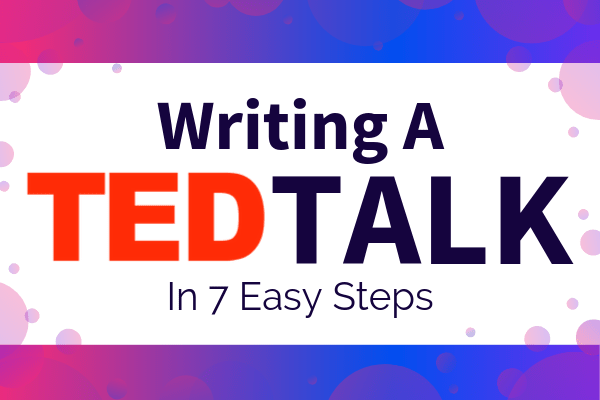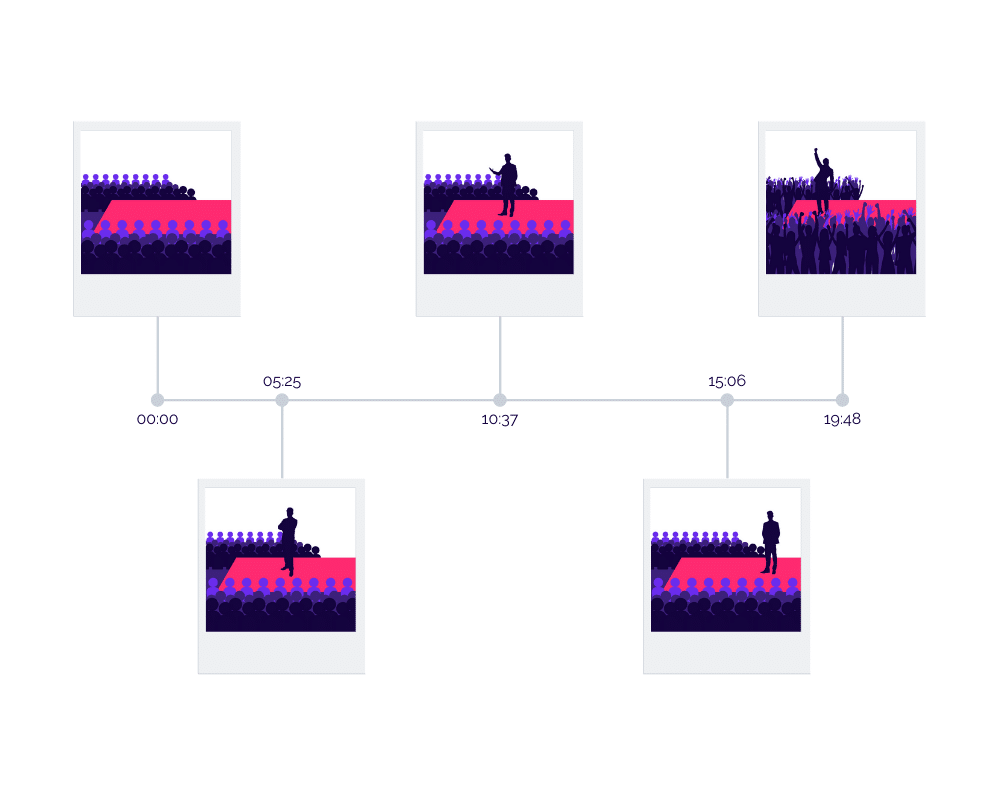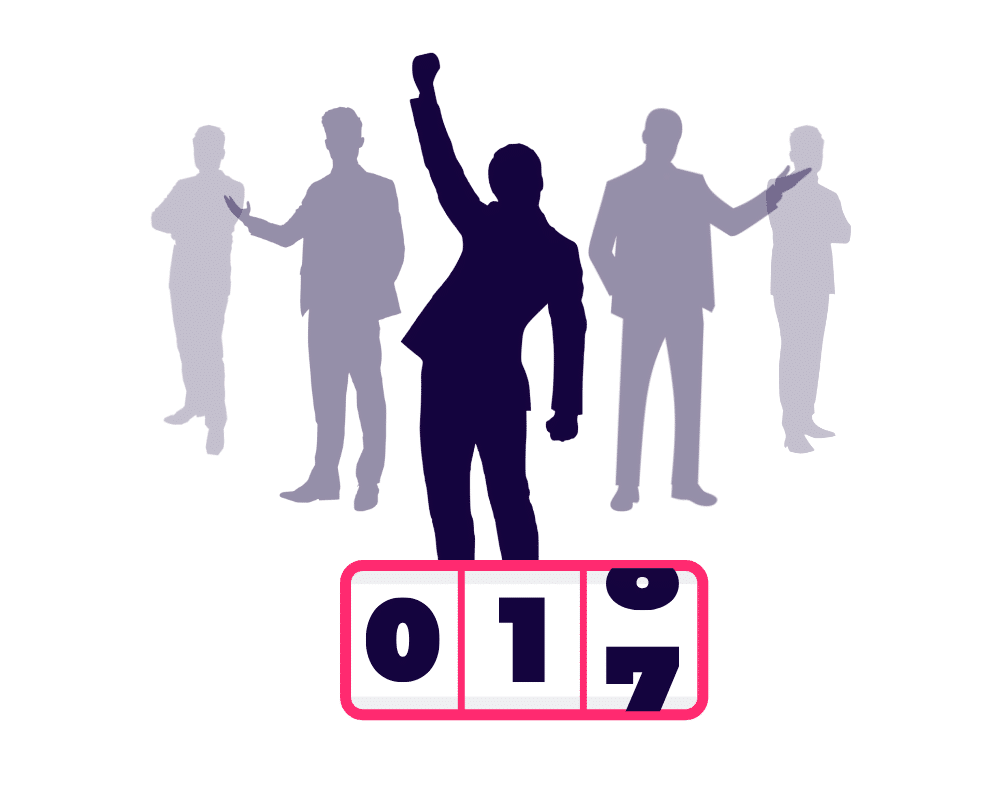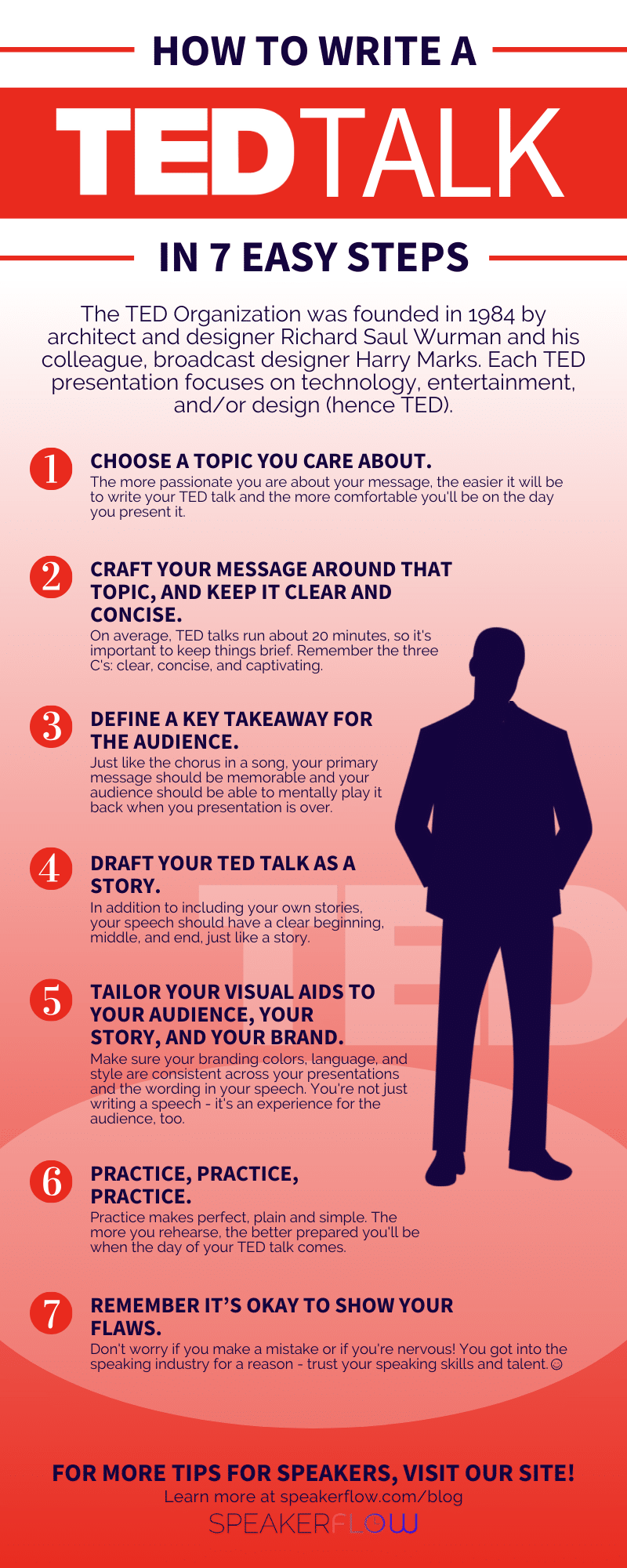

Summary: “The Danger of a Single Story"
Chimamanda Ngozi Adichie's "The Danger of a Single Story" Ted Talk, in July 2009, explores the negative influences that a “single story” can have and identifies the root of these stories. Adichie argues that single stories often originate from simple misunderstandings or one’s lack of knowledge of others, but that these stories can also have a malicious intent to suppress other groups of people due to prejudice (Adichie). People, especially in their childhood, are “impressionable and vulnerable” when it comes to single stories (Adichie 01:43). Adichie asserts that media and literature available to the public often only tell one story, which causes people to generalize and make assumptions about groups of people.
Adichie shares two primary examples to discuss why generalizations are made. Reflecting on her everyday life, she recalls a time where her college roommate had a “default position” of “well-meaning pity” towards her due to the misconception that everyone from Africa comes from a poor, struggling background (04:49). Adichie also clearly faults herself for also being influenced by the “single story” epidemic, showing that she made the same mistake as many others. Due to the strong media coverage on Mexican immigration she “had bought into the single story”, automatically associating all Mexicans with immigration (Adichie 08:53). These anecdotes emphasize how stereotypes are formed due to incomplete information, but one story should not define a group of people.
Adichie also tackles the effect of political and cultural power on stories. Power not only spreads a story, but also makes its ideas persist. Adichie states that power can be used for malintent, through controlling “how [stories] are told, who tells them, when they're told, [and] how many stories are told” (09:25). Using power to manipulate our understanding of others can be evidenced by Adichie’s trip to Mexico, where she realized Mexicans were not the harmful Americans Western media had portrayed them to be. Additionally, influential western stories have caused people like Adichie to have a limited idea of characters that appear in literature, since foreigners were not part of them. This is why the first stories Adichie had written included white characters playing in the snow rather than things reflective of her life in Africa (Adichie 00:39). Adichie explains how she became enlightened through “the discovery of African writers”, which “saved [her] from having a single story of what books are” and becoming another victim of a biased sample of literature (02:36).
Adichie puts her speech in a nutshell stating that “to create a single story, show a people as one thing, as only one thing, over and over again, and that is what they become” (09:25). Her conclusion responds to these misconceptions by reiterating the importance of spreading diverse stories in opposition to focusing on just one. She professes that the rejection of the single story phenomenon allows one to “regain a kind of paradise” and see people as more than just one incomplete idea (Adichie 18:17).
Works Cited
Adichie, Chimamanda Ngozi. “The Danger of a Single Story.” TEDGlobal, TED, 23 July 2009, Oxford, UK. Speech.
Articles copyright © 2024 the original authors. No part of the contents of this Web journal may be reproduced or transmitted in any form without permission from the author or the Academic Writing Program of the University of Maryland. The views expressed in these essays do not represent the views of the Academic Writing Program or the University of Maryland.

See Jane Write
a website & community for women who write & blog
How to Write a TED Talk
- June 4, 2018
On March 24, 2018, I crossed off dream that had been on my bucket list for years. On March 24, 2018, I gave a TED Talk at TEDxBirmingham on writing, feminism, and how sharing your story can change the world. You can watch it here.
I think all writers should add “Deliver a TED Talk” to their list of goals and not just because it’s something I’ve done. The work that goes into composing a TED Talk can sharpen your writing skills and the preparation that goes into successfully delivering a TED Talk will improve your public speaking skills, which will come in handy when you’re asked to speak at a writing or blogging conference or when you’re doing a reading to promote your latest book.
Before you can deliver a good TED Talk you have to write one. I’m going to help you do just that with this post. And while the tips I’m going to offer you helped me write a strong talk, these are also steps that could be used to write a strong op-ed or personal essay.
Step one: Write your throughline. For my fellow English lit nerds, a throughline is basically a thesis. You should be able to sum up what your talk is about in one sentence, a sentence short enough to be a single tweet (that was an added challenge by TEDxBirmingham organizer Matt Hamilton). My throughline: Writing can be a feminist act. I was confident that my message was clear after I delivered my talk before a focus group back in January. When the audience was asked if they could guess what my throughline was they knew it exactly!
Step Two: Write an outline. Despite my clear and succinct throughline, my vision for my talk was a mess at first. I went to Matt and told him I had three different talks in my head and I needed him to tell me which one to do. One idea was to talk about See Jane Write. Another was to talk about this idea of writing as a form of feminist activism and another was to discuss how to create a feminist classroom. “These are just three different acts of the same talk,” Matt said. And he was right. I highly recommend dividing the body of your talk into three subpoints to help you organize your thoughts and for each subpoint consider what anecdotes and examples you’ll use to convey your message. When drafting your outline don’t forget about ethos, logo, and pathos. You need to establish your credibility (share something that shows why people should listen to you), appeal to logic (including some facts will help with this) and appeal to emotion (personal stories always help with this).
Step Three: Write a shitty first draft. My first draft was awful. The beginning included too many mundane details, the middle was completely unfocused and the end simply fell flat. I felt stuck and was so frustrated that I started to regret ever agreeing to do a TED Talk in the first place. But as Anne Lamott says in her book Bird by Bird you have to write that “shitty first draft” to get to the good stuff.
Step Four: Revise, revise, revise. My talk went through a total of four drafts. What helped me get to a draft I was actually proud of and excited to deliver on stage was getting feedback from Matt, my focus group, and a few trusted and talented friends and watching a few of my favorite TED Talks for inspiration.
Side note: As you’re writing your talk remember that this is a talk. It’s something people will hear not read. I actually recited lines aloud before putting them on paper as I was working on my drafts and I recommend you try doing the same.
What are your tips for writing strong speeches?
What’s your favorite TED Talk?
Leave a Reply Cancel reply
Your email address will not be published. Required fields are marked *
Notify me of follow-up comments by email.
Notify me of new posts by email.
This site uses Akismet to reduce spam. Learn how your comment data is processed .

Home > Blog > Speaking 101 > How To Write A TED Talk In 7 Easy Steps
How To Write A TED Talk In 7 Easy Steps
Taylorr Payne

Within the speaking industry, there’s more than one way to make it to the top. The most obvious path is the numbers game, in which you speak at as many events as possible. On the other hand, the second option for gaining prestige is by first doing so in your focus industry. For example, if you work in finance, you would climb the latter within the finance industry first. From there, you would branch into speaking as a secondary profession before eventually speaking full-time. In many cases, it is this route that leads to an invitation for a TEDx or TED event. As a result, learning how to write a TED talk can be a bit less structured than writing a normal speech.
That said, although writing a TED talk can be a challenge, the benefits of speaking for TED events far outnumber the trials. Not only are they a stellar addition to your resume. They’re also a highly publicized and easily accessible way for you to share your message. Unlike in-person events, because TED talks are also available for free online, giving one allows you to reach people and groups that might not otherwise have the opportunity to hear you speak. Together, these benefits supplement your credibility and increase your exposure, aiding in that climb to the top of the speaking industry.
So, without further ado, let’s talk about how to write a TED talk that absolutely blows your audience away. Although, in this guide, we’ll focus on the seven steps below, feel free to check out our companion blog, “ What Is A TED Talk? The Fundamentals of TED Explained ” for more information about the TED Organization.
Choose a topic you care about.

First and foremost, a great TED talk demands a great topic. As a rule, when choosing your topic, there are four questions to answer. The first, as recommended by the TED organization, is “Is my idea new?” Here, the goal is to either choose a completely new idea or put a new spin on an older idea. Likewise, the second question asks, “Is my idea interesting?” Regardless of your topic’s age, you need to demand attention. Dr. Guy Winch’s 2019 TED Talk , for instance, is a perfect example of this. As a psychologist and speaker , Dr. Winch takes the common idea of work/life balance and makes it relevant to the modern practice of telecommuting.
That brings me to the third question to keep in mind when you write a TED talk: “Is my idea factual and realistic?” Besides capturing the audience’s attention, you also want to inspire them to action. In Dr. Winch’s talk, he suggests building a metaphorical barrier between your work life and personal life. Ultimately, there are a few ways he recommends doing this, but each way is achievable immediately. Similarly, as you choose your topic, keep in mind that although your idea can be big, the actions you inspire in the audience have to be smaller-scale and realistic.
Lastly, within the SpeakerFlow team, there’s a fourth question we recommend asking yourself as you write a TED talk: “Do I care about my idea?” Unsurprisingly, the more passionate you are about your topic, the easier it will be to write your talk. You’ll also be more confident about the topic, as a whole, making you more confident and comfortable on stage. Plus, if you’re passionate about your idea, the more likely it will be that you can answer “yes” to each of the questions above.
Craft your message around that topic, and keep it clear and concise.

The next step, after choosing a topic for your TED talk, is crafting a clear and concise message around it. At most, TED talks run 20 minutes total, some as short as 10 minutes. There are two reasons for this design, the first of which is for the audience. As seen with students throughout the world, there are many factors that contribute to people’s attention spans. In light of this, the more concise your talk, the less likely audience members’ focus will stray. The other reason TED talks are kept short is to test your speaking ability. Since the TED Conference was first hosted in 1984 , their mission has been to “change attitudes, lives and, ultimately, the world” through the ideas of their speakers. That means each TED speaker has to be exceptionally knowledgeable in their focus industry and able to explain their knowledge on a variety of levels.
Depending on your topic, this may be easier said than done, especially if you’re discussing a complex subject. This is another reason to choose a topic you are passionate about. In most cases, the more you care about something, the more you know. Because of this, the more easily you’ll be able to identify the most important things the audience needs to know. You’ll also have an easier time when you write a TED talk, as each of these things can serve as a part of your speech. It’s almost like drafting a five-paragraph essay, as a high school student. The introduction and conclusion take care of two paragraphs, leaving three to outline yourself. When you write a TED talk, the same outline applies on a larger scale, and the most important pieces of your message are those body paragraphs.
Define a key takeaway for the audience.

After outlining the important bullet points to cover in your TED talk, the next piece of the puzzle is defining a key takeaway for your audience. In our essay analogy, this is like the thesis statement in your opening paragraph. In short, it needs to answer the question, “What sentence or phrase should the audience remember when they leave?” If you’re not sure how to define your thesis, the team at Ethos3 put it perfectly in one of their guides from 2018. In it, they recommended to write a TED talk and then sum it up in a single sentence. Although it sounds difficult, this ultimately forces you to narrow your message as much as possible. This makes it easier for the audience to remember your talk and gives you a reference point as you draft it.
More inspiration can also be found in video titles in the library of past TED talks or on the TED YouTube channel . Some of my personal favorites include “ Dangerous times call for dangerous women ” by Pat Mitchell and “ To help solve global problems, look to developing countries ” by Bright Simons. In each of these examples, there’s enough information to see what the speaker’s main topic is and get an idea of their argument. Likewise, your key takeaway should be engaging and succinct. Think of it like you’re designing it to be a mini version of your main idea, and remember the questions we covered earlier. Is it new, interesting, factual, and realistic? Can I passionately back it up? If your key takeaway can answer these with a “yes,” you’re all set for the next piece of the puzzle.
Draft your TED talk as a story.

At this point, you should be all set to write a TED talk. With your main arguments outlined and your key takeaway narrowed down, all that’s left is to add the entertainment aspect. This is largely where you can bring in your personal style and really make the TED talk your own. If you’re an experienced speaker, although TED talks are unique, you probably already have this nailed down.
On the other hand, if you’re a new speaker and still a little nervous about this, no worries! Learning to write a TED talk is like learning to write any speech in one way more than any other: the importance of stories. In addition to including facts and evidence, there are a handful of less structured ways to make your speech more of a story than a lecture. This not only makes you more relatable to members of the audience. It’s also yet another way to make your TED talk more engaging. After all, everyone loves a good story, right?
Some of the simplest ways to write a TED talk as a story are outlined by Disney film writer and director Andrew Stanton . Overall, one of the greatest tips he has can be found in his own TED talk from 2012: “Use what you know. Draw from it. It doesn’t always mean plot or fact. It means capturing a truth from your experiencing it, expressing values you personally feel deep down in your core.” In short, your speech should have a beginning, middle, and end like a story, but it should also be personal. Your audience is full of people just like you, so although being a little emotional might feel scary, it also makes you easier to connect with. If you can make ‘em laugh, too, that’s an added bonus. 👏
[hubspot type=cta portal=5815852 id=b3ed6230-e78d-4db6-a45e-f16c7b63db16]
Tailor your visual aids to your audience, your story, and your brand.

Besides the verbal aspects of your TED talk, you may want to consider a visual component, as well. In many of the examples we’ve touched on, this means a slideshow presentation to play behind you as you speak. Depending on the depth of your topic and the length of your talk, the complexity of your slideshow may vary. That said, it’s important to remember to keep things simple. The goal of the slides is to add to what you’re saying, not distract from it. Knowing this, as you create your visual aids, try to avoid gifs or images that could be distracting or disturbing. Conversely, take note of the less intriguing parts of your speech, too. Then, design your slides to include a visual aid or two during these points. That way, you can keep everyone engaged for necessary information, even if it’s not exciting.
The other piece to keep in mind, as you write a TED talk, is branding. On any visual aids in your speech, be sure your style is consistent with your spoken language and your brand. For example, if you’re speaking about how to handle grief, steer clear of a slide show with holographic gifs or a hot pink outfit. Again, the goal of visual aids is to add to your message and your stage persona. That means each piece of your TED talk – clothes, body language, wording, cadence, visual aids – works together to convey your message. As you wrap up the drafting part of preparing for a TED talk, keep this in mind.
Practice, practice, practice.

The final step in the pre-event steps to write a TED talk is a simple one: Practice, practice, practice. In front of as many people as you can, rehearse your speech and iterate as needed. Even as an experienced speaker, there could be ticks or bad habits that you may not notice but your audience will. Take one of my college professors, for example – We’ll call her Ms. Smith. Although Ms. Smith was a font of knowledge when it came to microbiology, she unknowingly was an incredibly distracting speaker. This was largely due to her constant gesticulating and the drama with which she moved her hands as she spoke. Obviously, for her students, this made it hard to follow her, but I’m sure to this day, she doesn’t even realize she does it.
To sum up, when you write a TED talk and start practicing, learn from Ms. Smith and have someone watch you present. Not only can they catch any habits distracting from your speech. They can also provide their own perspective on your body language or the structure of your presentation. All in all, you’re giving a TED talk for the benefit of the audience, in-person and online. What better way to make sure you reach that audience than to practice with a few “test’ audiences beforehand?
Remember it’s okay to show your flaws.

Lastly, as you write a TED talk, remember you don’t have to be perfect. Obviously, we all want to nail everything about our presentation, from our clothes to our body language to the words themselves. However, even if you’ve spoken thousands of times before, it’s normal to be nervous or slip up. In fact, tons of past TED speakers have felt the same. Just remember, in the words of artist (and TED speaker) Janice Tanton , “Fear is just a misguided form of creativity.” You entered the speaking industry because of your creativity and passion, so anything that you see as a flaw just makes you all the more memorable for your audience. Plus, if you do slip up on stage, being able to laugh at yourself helps connect you to your audience, too.
In conclusion, there are countless speaker awards and certifications out there that demonstrate how great a speaker you are and how much experience you have. The same validation also comes from speaking for the TED organization. Whether you appear at a small TEDx event or the yearly TED conference itself, having TED on your resume gives decision-makers their answer immediately. In other words, seeing that you’ve given a TED talk makes them more likely to hire you!
So, this year, as you either write a TED talk for an upcoming event or simply work to gain the TED Organization’s attention, remember this checklist. Feel free to also check out TED’s illustrated preparation guide or TEDx speaker guide , for tips and tricks from the TED Organization itself.
Have a TED talk in the books already? Let us know! Here at SpeakerFlow, we’re all about real connections with real people, and we’d love to give you and your TED talk a shoutout. 😊🎉

Subscribe To Our Blog
Get updates every time we release a new blog. Plus, join thousands of other speakers, coaches, and consultants learning to use systems to take control of their business.
Other Articles You Might Like

The SpeakerFlow State Of The Industry 2023 Report

Beyond Box-Checking: Why Speaker Diversity Matters

How To Speak Publicly With Confidence
[…] How To Write A TED Talk In 7 Easy Steps […]
Sitemap | Privacy Policy | Website Terms of Service | Terms of Use | SF University Terms of Service | SpeakerFlow CRM Terms of Service
Made With ❤️ By SpeakerFlow
SpeakerFlow Payment Plans
We understand not everyone’s in a position to pay up front. That’s why we don’t require credit checks or use outside lending services – Just your word. Split your payments over 3 months. 👍
Power Up ⚡️
The system without any live training, migration, or implementation
$1,100.00/mo
Total Over 3 Months: $3,300
Flow Zone 🎯
Done-for-you migration and implementation of our Flow Stack
$2,200.00/mo
Total Over 3 Months: $6,600
Flow Zone+ 🚀
Flow Zone plus migration of other complex systems
$3,666.67/mo
Total Over 3 Months: $11,000
We add a flat rate 10% fee to any financed tier and own the rights to your accounts and its data until the amount is paid in full.
If you’re interested in a payment plan, please email [email protected] .
Want a daily email of lesson plans that span all subjects and age groups?
We need to talk about an injustice - bryan stevenson.
139,153 Views
19,949 Questions Answered
Let’s Begin…
In an engaging and personal talk -- with cameo appearances from his grandmother and Rosa Parks -- human rights lawyer Bryan Stevenson shares some hard truths about America's justice system, starting with a massive imbalance along racial lines: a third of the country's black male population has been incarcerated at some point in their lives. These issues, which are wrapped up in America's unexamined history, are rarely talked about like this.
About TED Talk Lessons
TED Talk Lessons are created by TED-Ed using phenomenal TED Talks. Do you have an idea for a lesson? Create it now using any video from YouTube »
Meet The Creators
- Speaker Bryan Stevenson
More from Troubleshooting the World

Picture a perfect society. What does it look like?
Lesson duration 05:55
179,808 Views

When AI can fake reality, who can you trust? - Sam Gregory
Lesson duration 12:05
123,083 Views

The growing megafire crisis — and how to contain it - George T. Whitesides
Lesson duration 10:42
56,686 Views

How labor unions shape society - Margaret Levi
Lesson duration 17:05
51,048 Views
Samantha O'Sullivan (Physics / African American Studies)
Gullah Physics: Challenging English Language Hegemony in Science
Second prize expand_more
Sahar Mariam Mohammadzadeh (Government)
The Impact of Twitter on the Supreme Court
Third prize expand_more
Stephanie Alderete (Psychology)
Preschoolers' Ability to Think about Alternative Possibilities
Finalists expand_more
Alex Grayson (Molecular & Cellular Biology)
Comparing Fox and Human Brain Connectivity Patterns
Javin Pombra (Computer Science)
Unraveling the Black Box: Explainability for Artificial Intelligence in the Twenty-First Century
Zelin Liu (Classics / History)
Using the Past to Define Group Identity
Jerrica Li (Comparative Literature)
Diaspora: A Genre for This New Planetary Reality
Jahnavi Rao (Government)
The Spillover Potential of a Nudge
Daiana Lilo (Government / Data Science)
A Great Personality: How Different Characteristics Can Predict Supreme Court Decisions
- Skip to main content


How to Create Your TED Talk: An 8-Step Process
by Jezra on March 9, 2017
First, A Little Background on TED
The TED conference (which stands for technology, entertainment, design ) began life in 1984 as a yearly and very expensive conference where industry leaders and creative types gathered to exchange “Ideas Worth Spreading.”
Back then, it was all about the live experience, and speakers were expected to bring some quirky spontaneity to the stage.
But fast forward more than 30 years, and TED has become an institution, spawning countless local “TEDx” events, putting hundreds of speeches online each year, getting millions upon millions of views, and changing the way we all think about public speaking!
So, What IS a TED Talk?
According to Chris Anderson, the owner and global curator of TED, every TED talk starts with an idea :
“You have something meaningful to say, and your goal is to re-create your core idea inside your audience’s minds.” —from TED Talks: The Official TED Guide to Public Speaking
Anderson calls this idea “the gift in every great talk.” Your idea may:
- Be common-sense (“Every kid needs a champion”) or counter-intuitive (“The way we think about charity is wrong”)
- Describe a scientific breakthrough (“How bacteria talk”) or your own experience (“I am the son of a terrorist, here’s how I chose peace”)
- Motivate people to action (“We need to talk about an injustice”) or greater self-awareness (“Your elusive creative genius”)
But in every case, your TED talk will begin with an idea.
Want Speechwriting or Coaching Help?
And whether or not your talk actually builds a model of your idea in your listeners’ brain — Anderson takes that literally, and research on “neural coupling” backs him up — your TED talk exists to communicate this idea to your listeners.
That is your talk’s one and only goal.
Other Qualities of Successful TED Talks
In TED’s secret to great public speaking (an eight-minute video that’s worth watching), Anderson offers three guidelines for creating your TED talk:
- Focus on one major idea
Ideas are complex things; you need to slash back your content so that you can focus on the single idea you’re most passionate about , and give yourself a chance to explain that one thing properly… Everything you say [should link] back to it in some way.
- Give people a reason to care
Stir your audience’s curiosity. Use intriguing, provocative questions to identify why something doesn’t make sense and needs explaining. If you can reveal a disconnection in someone’s worldview , they’ll feel the need to bridge that knowledge gap.
- Build your idea with familiar concepts
Build your idea, piece by piece, out of concepts that your audience already understands … A vivid explanation… delivers a satisfying ah-hah! moment as it snaps into place in our minds.
These are important best practices, but they don’t tell you what to do to create a TED talk.
For that, try this…
8-Step Process for Creating Your TED Talk
Step 1. find an idea you want to share.
To hone in on your idea worth sharing, it can be useful to ask yourself things like:
- What’s one assumption I’d like to challenge?
- What’s a belief of mine that has changed, and why?
- What does everyone miss when they think about my area of interest or expertise?
And remember, you’re looking for an idea . As Jeremey Donovan says in How to Deliver a TED Talk ,
…an idea is not a theme, a general truth, a platitude or a big goal. “Everyone wants to feel included” is not an idea, it’s a general truth. “Empowering women” is not an idea, it’s a topic.
Step 2. Develop an unexpected and/or catchy way to state your idea
If your idea can be stated in a catchy way, listeners will pay more attention and remember it more easily. Here are some examples (with more conventional versions of the same idea in parentheses):
- We can solve malnutrition now (vs. Malnutrition is a problem that is finally, in our day and age, able to be resolved by advances in science.)
- Almost dying saved my life (vs. A near death experience created the motivation for me to face and overcome problems that otherwise would have slowly killed me.)
- Never, ever give up (vs. Cultivate the ability to commit without wavering; it’s an essential component of your lifelong success.)
Step 3. Collect anything and everything that relates to your idea
To re-create your idea in the minds of your listeners, you’ll need vivid examples, illustrations, stories, facts, questions, comments, etc.
So take a few days to notice anything and everything that relates to your idea, and collect these materials by writing them down, taking photos, recording your thoughts as sound files, etc.
Examples of things you might collect include:
- a snippet of conversation
- a quote you heard in high school
- a story that relates to your idea
- a fact, or cluster of data that supports it
- a metaphor or analogy that helps explain it
- a personal moment in your relationship with the idea
- a physical object that will help your audience understand it (here, my client Erika Frenkel presents an anesthesia machine )
Basically, anything that comes to your mind at this stage should be collected.
And don’t worry yet about which materials will end up in your talk.
You can’t collect things and evaluate them at the same time, so just collect for now; you’ll have a chance to evaluate later.
Step 4. Start imagining how you might open and end your talk
While it’s too soon to choose your opening and close, it’s not too soon to start playing with ideas for these important parts of your talk.
An effective way to begin any speech (not just a TED talk) is to grab your audience’s attention — often with a human interest story, a surprising statistic, an unexpected observation, or a thought-provoking question.
There are probably some great attention-grabbers in the material you collected for Step 3. Pick one that you particularly like, and flag it as a possible opening for your talk.
As for the close , you’ll probably want to end your talk in a positive, forward-looking way . This is often done by:
- calling the audience to action;
- painting a hopeful picture of the future; and/or
- “paying off” (finishing, resolving) a story or discussion that has run through your talk, so that listeners get a sense of closure.
With your provisional opening and close in mind, you’re now ready to…
Step 5. Put the rest of your materials in a reasonable order
The middle of any speech is tricky, and a TED talk is particularly so, because TED talks can take just about any form you’d like.
So to tackle this part of your TED talk, take the materials you’ve collected and shuffle them until you find a good arrangement. To do this, you can:
- Create a high-level outline (leave out most of the detail, just arrange the big points or elements)
- Write each element (story, comment, observation, fact) on a 3 x 5 card and physically shuffle them to see different possible orders. (You can do this on a table, or digitally, by creating one slide per element and shuffling them with PowerPoint’s “slide sorter” feature)
- Use sound (speaking out loud) instead of writing to put your talk elements into different sequences (Ask: Does it sound right if I tell that story first, then give the fact? How about if I give the fact first, then tell the story?)
- Try any other method that works for you.
How will you know when the order is good?
Keep in mind that your goal is to create an understanding of your idea in the minds of your audience members , and try to arrange your explanations, comments, and stories in a way that leads to that goal. (You’ll get to test this on real people in Step 7.)
Trust your instincts: If something seems out of place to you, it probably is. Try moving it to a different part of your talk or even skipping it, and see if that works better.
And don’t expect to find the best organization for your talk the first time you try, because that almost never happens!
Step 6. Talk your way to a rough draft of your script
This is where your “speaking plan” becomes a “speech.”
Take your outline or list of ordered elements and talk about each item in turn.
When I’m writing a speech, I like to literally talk it out loud and type up what I’m saying as I’m saying it — but you can also use your computer’s voice recognition software to capture your words, or talk into the voice memo feature on your phone (this used to be called “dictating”) and type up the sound file later.
Why record yourself talking instead of just writing out the speech?
Because most of us get all formal and stiff when we write, and the ideal for a talk is that it sounds like you’re… talking !
And here’s a hint:
As you do this step, pay particular attention to the way different elements (materials) that you’ve used in your talk are connected.
If, for example, you tell me that:
- The river flooded, and
- Some people moved out of the neighborhood…
I’ll want to know: Did people move because the river flooded? Did most people stay even though the river flooded? Did the river flood after people had already moved?
When you spell things out clearly, people will form a clear picture of your point.
Step 7. Try out your Ted talk draft on a volunteer listener
The point of this step is to get feedback on how to improve the structure and clarity of your draft.
Ask someone you trust — a smart 10-year-old is perfect — to listen to your talk.
Read it to them (because you haven’t finalized, let alone memorized, it yet), and then ask them:
- Did I explain my idea clearly?
- Was there anything in my talk that you didn’t follow?
- Was there anything you didn’t understand?
- Did anything seem out of place?
- Did I lose your interest anywhere?
If your listener wants to discuss the 6,000 facts you left out, or how your talk should really be about X instead of Y, gently lead them back to these questions.
The point is not to change your talk. The point is to improve it’s effectiveness.
Step 8. Repeat the following steps as needed
- Based on your listener’s feedback, make changes that will improve your draft. But don’t get carried away editing; if it ain’t broke, don’t fix it! (And keep your old drafts in case you want to go back to something you did earlier; I number mine v1, v2, v3, etc.)
2. Practice delivering your new draft out loud.
3. Try out your new draft on a volunteer listener, get their feedback , and repeat these steps as often as needed until your talk has taken a satisfying shape.
And finally…
There’s no better time to start working on your talk than now. Even if your schedule is crammed, you’re better off working for a few minutes each day than leaving everything to the last minute!
And as you work this process, remember that perfection isn’t possible.
So instead of striving for perfection, prepare carefully, take your best shot, and try to relax .
Your audience is going to love this talk — and you deserve to enjoy it, too!
Need Coaching or Speechwriting for Your TED Talk? Get in Touch!
- How can I help you? *
- How did you find me?
You May Also Want to Read...
- Giving a TED-Style Talk? Here's How They're Different from Business Presentations
- TED Has Eliminated Two Things That Used to Be Said In Most Speeches: Hello and Thank You. Should You?
- Masterful Public Speaking: Daniel Kraft's TEDx Talk

Breaking Down Tim Urban’s TED Talk on Procrastination
- The Speaker Lab
- May 7, 2024
Table of Contents
Ever found yourself scrambling to meet a deadline while cursing your past decisions? If so, you’re not alone. Tim Urban’s TED talk dives deep into the world of procrastination, revealing why we put off tasks until the last minute. This presentation isn’t just another lecture; it’s a journey through the mind of a master procrastinator—one that might sound eerily familiar.
In his engaging talk, Urban unpacks the battle between our brain’s “rational decision-maker” and its “instant gratification monkey.” More than just introducing terms, however, he provides an eye-opening perspective on how this internal tug-of-war impacts our productivity and personal goals.
Understanding Tim Urban’s TED Talk on Procrastination
In his viral TED Talk , “Inside the mind of a master procrastinator,” Tim Urban takes us on a hilarious and insightful journey into the mind of a chronic procrastinator. With his signature stick figure illustrations and self-deprecating humor, Urban breaks down the thought process that leads him (and many of us) to put off important tasks until the last possible moment.
Key Takeaways from Tim Urban’s TED Talk
In his TED Talk, Urban introduces the concept of the “rational decision-maker” and the “instant gratification monkey,” two key players in the procrastinator’s mind. He explains how the rational decision-maker is the part of our brain that knows what we should be doing, while the instant gratification monkey is the part that just wants to have fun and avoid anything difficult or boring.
Procrastination occurs when we let the instant gratification monkey have its way. If left in charge for too long, the monkey causes a third character—called the “panic monster”—to wake up. As the name suggests, this character appears when deadlines loom and procrastinators are spurred into action through sheer panic.
While Urban uses these three characters to tell a story about himself, the truth is that everyone procrastinates to some degree. In fact, we all have a rational decision maker, instant gratification monkey, and panic monster in our heads. The real takeaway here, though, is that procrastination can prevent us from achieving our full potential if we don’t learn to manage it. Relying on the panic monster to get things done only leads to last-minute rushing and stress. Instead of using this character as a crutch, Urban encourages us to find other ways to manage our procrastination tendencies.
Find Out Exactly How Much You Could Make As a Paid Speaker
Use The Official Speaker Fee Calculator to tell you what you should charge for your first (or next) speaking gig — virtual or in-person!
What Public Speakers Can Learn from Tim Urban’s TED Talk
Urban’s TED Talk has over 70 million views, a strong indicator of his engaging presentation style. For public speakers who are just getting started, or who may be considering giving a TED Talk , let’s take a look at some of the skills he utilized in his presentation.
3 Public Speaking Tips
When you analyze Urban’s TED Talk closely, you’ll find there are three main methods he uses to engage his audience.
First, he uses relatable analogies and metaphors to explain complex ideas. Just consider the way Urban explained procrastination using his three characters. Although Urban does not use data or refer to any sort of research in his talk, the relatable analogy rings true for his audience and helps them better grasp procrastination. A method like this can be a life-saver for speakers of all kinds.
Second, Urban utilizes visuals to complement his message. Throughout his TED Talk, Urban presents very simple stick-figure illustrations. Each one tells a different part of his story and helps his audience track each scene. Although his slides varied significantly from the TED Talk norm, they nevertheless worked seamlessly with his presentation. If you’re a speaker who tends to spend a lot of time on your slides, then take courage. Urban demonstrates that your slides don’t have to be extra sleek or dazzling in order to be serviceable.
Third, Urban incorporates humor into his talk. This skill is one of the trickiest to nail as a speaker, yet Urban does it with finesse. His trick is to embed his humor in his storytelling. By telling a personal, relatable story and pairing it with humorous illustrations, Urban is able to keep his audience entertained. So if you’ve ever doubted the power of storytelling—don’t. As a speaker, you’ll need it to help your jokes land.
The Impact of Tim Urban’s Ideas Beyond the TED Stage
The TED stage isn’t the only place that Tim Urban is known for. In addition to being a published author, he also runs the blog Wait But Why . This blog covers a wide range of topics including science, technology, philosophy, politics, and more. With his signature stick figure illustrations and a humorous yet informative writing style, Urban make complex subjects engaging and accessible. Popular series include his posts on Elon Musk , the Fermi Paradox , artificial intelligence and even relationships .
Stimulating Conversations Inspired by Wait But Why
Beyond just reading these blog posts, it’s possible to use them as topics for dialogue. Some thought-provoking conversations could include:
- What are the implications of advanced AI and how should we prepare for it as a society?
- Given the vastness of the universe, what do you think is the likelihood that alien life exists? What would it mean for humanity?
- How can we balance living in the moment with planning for the future?
- What are the keys to maintaining happy, healthy long-term relationships?
- How will emerging technologies like AR, VR, and neurotech change how we live and work in the coming decades?
These topics are sure to spark some lively discussions and debates among friends and family. They nudge us to dive deep into the big questions and exciting possibilities that help shape our world.
By exploring these thought-provoking themes in our own conversations, we can gain new perspectives, challenge our assumptions, and expand our understanding of the world. So next time you gather around the dinner table, consider bringing up one of these blog-inspired topics. You never know what you might learn about others—or yourself.
Free Download: 6 Proven Steps to Book More Paid Speaking Gigs in 2024
Download our 18-page guide and start booking more paid speaking gigs today!
FAQs on Tim Urban’s Ted Talk
What is the main point of tim urban’s ted talk.
Urban delves into the reasons behind procrastination, explaining how our brains often favor immediate gratification over long-term goals.
What is Tim Urban famous for?
Urban is renowned for his blog Wait But Why, where he simplifies and humorously presents complex concepts.
What was Tim Urban’s main problem in college?
During his college years, Urban battled with procrastination, notably beginning a 90-page thesis at the eleventh hour.
How did Tim plan to do his 90-page thesis and what actually happened?
Urban had planned for months of work on his thesis, but ended up cramming all the work into a few panic-driven days before the deadline.
In reflecting upon Tim Urban’s TED Talk, we discover more than just a humorous college story about the perils of procrastination. In fact, we find a narrative on human behavior, choice-making under pressure, and ultimately redemption through understanding oneself better. At its core, Urban’s talk challenges viewers to reconsider their daily habits in pursuit of meaningful accomplishments over momentary pleasures. By harnessing our time wisely, we can seize opportunities we might have otherwise missed. So—are you ready embrace change?
- Last Updated: May 6, 2024

Explore Related Resources
Learn How You Could Get Your First (Or Next) Paid Speaking Gig In 90 Days or Less
We receive thousands of applications every day, but we only work with the top 5% of speakers .
Book a call with our team to get started — you’ll learn why the vast majority of our students get a paid speaking gig within 90 days of finishing our program .
If you’re ready to control your schedule, grow your income, and make an impact in the world – it’s time to take the first step. Book a FREE consulting call and let’s get you Booked and Paid to Speak ® .
About The Speaker Lab
We teach speakers how to consistently get booked and paid to speak. Since 2015, we’ve helped thousands of speakers find clarity, confidence, and a clear path to make an impact.
Get Started
Let's connect.
Copyright ©2023 The Speaker Lab. All rights reserved.
Create an account to add artworks to your personal collections.
Forgotten password?
I agree to the Terms of Use and Privacy Policy
Enter your email address below to recieve an email to reset your password.
Back to sign in
An email has been sent to your inbox to reset your password.
- Learning Resources
- PreK–12 Educators
- WashU Faculty
- WashU Students
- Colleges/Universities
- Scheduling a Tour
- Galleries and Sculpture Garden
- Space Rental
- Art on Campus
- Kemper Circle
- Director's Circle
- Planned Giving
- Donating Art
- Kemper Corporate Circle
- Conservation
- University Libraries
- Island Press
- Press and News
- Collection and Advisory Committees
- Institutional Documents
- Publications and Editions
2024 MFA in Visual Art Candidate Talks

Join Lisa Bulawsky , professor of art, and chair of the MFA in Visual Art program , for an informal discussion with the 2024 MFA in Visual Art candidates from the Sam Fox School’s Graduate School of Art about their works in Slingshot: 2024 MFA in Visual Art Thesis Exhibition .
The 2024 MFA in Visual Art candidates are Emily Elhoffer, Jordan Geiger, Joni P. Gordon, Mad Green, Sophia Hatzikos, Micah Mickles, Sarah Moon, Samantha Neu, and Lynne Smith.
Public opening to immediately follow. Events are free, but registration is required. Register here .
test View details
- Twitter -->
How to make a great presentation
Stressed about an upcoming presentation? These talks are full of helpful tips on how to get up in front of an audience and make a lasting impression.

The secret structure of great talks

The beauty of data visualization

TED's secret to great public speaking

How to speak so that people want to listen

How great leaders inspire action

IMAGES
VIDEO
COMMENTS
Chimamanda Ngozi Adichie's "The Danger of a Single Story" Ted Talk, in July 2009, explores the negative influences that a "single story" can have and identifies the root of these stories. Adichie argues that single stories often originate from simple misunderstandings or one's lack of knowledge of others, but that these stories can also have a malicious intent to suppress other groups of ...
6 months before the event's day: Thesis and basic outline due 5 months out: A script or detailed outline due 4 months out: Second draft and first rehearsals 3 months out: Final draft and more rehearsals 2 months out: Bi-weekly rehearsals 1 month out: Weekly rehearsals 2 weeks out: Take a break. (Don't think about the talk.)
When it comes to technology, we're often presented with two contrasting visions of the future: one where technology fulfills all our desires, and another where it leads to chaos and conflict. Sociologist Ruha Benjamin is here with a more radical vision of the future — one where humanity isn't saved or slayed by technology, but rather uses it to uplift ordinary people and make things like ...
This Open Access Senior Thesis is brought to you by Scholarship@Claremont. It has been accepted for inclusion in this collection by an authorized administrator. For more information, please [email protected]. Recommended Citation Grodahl, Jack R., "What Makes a Good Ted Talk?" (2015).CMC Senior Theses.Paper 1164.
TED Talks are influential videos from expert speakers on education, business, science, tech and creativity, with subtitles in 100+ languages. Ideas free to stream and download.
Examining TED Talks through the Lens of Move Analysis Surasawadee Ratanakul Faculty of Liberal Arts, Mahidol University, Nakhon Pathom 73170, Thailand ... example, the restated thesis, the restated suggestion and the call for action move features are used in both the body and the closing. The study shows these empirical results with the aim of
Craft your message around that topic, and keep it clear and concise. The next step, after choosing a topic for your TED talk, is crafting a clear and concise message around it. At most, TED talks ...
The TED Talks channel features the best talks and performances from the TED Conference, where the world's leading thinkers and doers give the talk of their lives in 18 minutes (or less). Look for ...
Step one: Write your throughline. For my fellow English lit nerds, a throughline is basically a thesis. You should be able to sum up what your talk is about in one sentence, a sentence short enough to be a single tweet (that was an added challenge by TEDxBirmingham organizer Matt Hamilton). My throughline: Writing can be a feminist act.
In a TED Talk setting, this generally includes three sections. First, introduce your main idea and any background information. Second, present evidence for the main idea, so as to prove your point. Lastly, give your conclusion, based on the evidence provided.
To cite a TED Talk from the TED site, list the speaker as author, give the date listed on the site, include "Video" in square brackets after the title, list the publisher as "TED Conferences," and give the URL. You can cite a TED Talk easily by using our free APA Citation Generator. Speaker last name, Initials. ( Year, Month ).
1 This article presents the result of an unpublished Master´s thesis. This research was funded by ... refers to the first TED talk mentioned in the method section. Revista X, v. 16, n. 6, p. 1552 ...
Craft your message around that topic, and keep it clear and concise. The next step, after choosing a topic for your TED talk, is crafting a clear and concise message around it. At most, TED talks run 20 minutes total, some as short as 10 minutes. There are two reasons for this design, the first of which is for the audience.
Let's begin this guide's examination of happiness with a TEDTalk from Harvard Medical School psychologist Nancy Etcoff who explores whether and why we're hard-wired for happiness. From the curator of Understanding Happiness, a brief look at the key facts, the tough questions and the big ideas in his field. Begin this TED Studies subject with a ...
The best TED Talks have a thesis statement. From the start, you know what the talk is going to be about. These statements can be, and often are, summed up in a clear, succinct statement or a ...
Meet The Creators. Speaker Bryan Stevenson. In an engaging and personal talk -- with cameo appearances from his grandmother and Rosa Parks -- human rights lawyer Bryan Stevenson shares some hard truths about America's justice system, starting with a massive imbalance along racial lines: a third of the country's black male population has been.
At age 12, Freeman Hrabowski marched with Martin Luther King. Now he's president of the University of Maryland, Baltimore County (UMBC), where he works to cr...
Three Minute Thesis (3MT®) is an academic research communication competition developed by The University of Queensland (UQ), Australia. While the original competition was for graduate students, a number of colleges are now sponsoring undergraduate competitions. 3MT offers seniors the opportunity to create an accessible and interesting ...
And don't expect to find the best organization for your talk the first time you try, because that almost never happens! Step 6. Talk your way to a rough draft of your script. This is where your "speaking plan" becomes a "speech.". Take your outline or list of ordered elements and talk about each item in turn.
How did Tim plan to do his 90-page thesis and what actually happened? Urban had planned for months of work on his thesis, but ended up cramming all the work into a few panic-driven days before the deadline. Conclusion. In reflecting upon Tim Urban's TED Talk, we discover more than just a humorous college story about the perils of procrastination.
Helpful advice for aspiring writers of all ages. Being a writer is all about expressing your unique perspective with feeling and originality, not about having a huge vocabulary or getting published, says author Jacqueline Woodson. She shares a little of what she's learned in the process of writing a lot (30+ books!).
Thesis On Ted Talk. 676 Words 3 Pages. What is the speaker's thesis? Is there a bias? The thesis of this talk is that nonverbals, which is the type of communication that does not require words influence our thoughts, our feelings, and our psychology. I feel like it's debatable on whether or not that this TED talk has a bias.
However, with her doula on the phone and her wife driving as fast as her car would allow, Brevard-Rodriguez wound up giving birth en route in the front passenger seat. "The doula is trying to ...
Opening of the 2023 MFA in Visual Art Thesis Exhibition. Photo by Dmitri Jackson. Join Lisa Bulawsky, professor of art, and chair of the MFA in Visual Art program, for an informal discussion with the 2024 MFA in Visual Art candidates from the Sam Fox School's Graduate School of Art about their works in Slingshot: 2024 MFA in Visual Art Thesis Exhibition.
What we learned from teetering on the fiscal cliff. Tim Urban knows that procrastination doesn't make sense, but he's never been able to shake his habit of waiting until the last minute to get things done. In this hilarious and insightful talk, Urban takes us on a journey through YouTube binges, Wikipedia rabbit holes and bouts of staring out ...
The secret structure of great talks. From the "I have a dream" speech to Steve Jobs' iPhone launch, many great talks have a common structure that helps their message resonate with listeners. In this talk, presentation expert Nancy Duarte shares practical lessons on how to make a powerful call-to-action. 18:00.